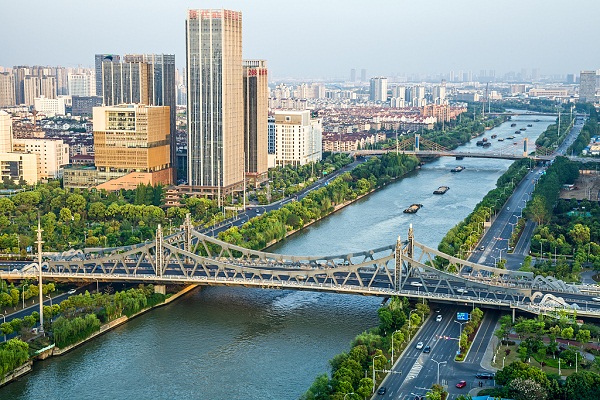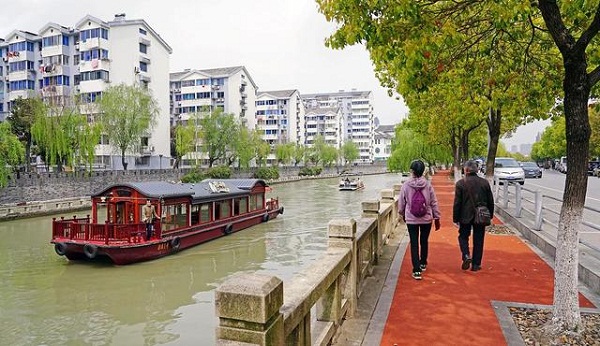
Wuxi section of the Grand Canal. [Photo/VCG]
Throughout history, many cities have prospered because of their proximity to rivers. One such settlement is Wuxi, where the close interaction between the Grand Canal and Wuxi residents shapes the local culture, lifestyle and economy.
The Grand Canal is a vast waterway system running from Beijing in the north to Hangzhou, Zhejiang province, in the south. It stretches for nearly 3,200 kilometers and passes through eight provinces and municipalities.
Listed as a UNESCO World Heritage site, the canal is the longest and oldest artificial river in the world. It has played an important role in ensuring China's economic prosperity and stability, and is in use today as a major means of transport.
The Grand Canal passes through the city of Wuxi and forms a turtle-shaped space in the famous ancient city. The Wuxi section of the Grand Canal is only 40.8 km in length, but it used to be the lifeblood of the city's economy.
In recent years, the city has made good use of industrial heritage sites left along the Grand Canal and constructed several museums there, including the Wuxi Silk Industry Museum and the Wuxi Folk Music Museum. The government has also turned the workshops of a former silk-reeling mill and tile factory into museums of both crafts. There, tourists can glimpse the urban features of modern Wuxi along the ancient canal.
The section of the canal in Wuxi from Kuatang Bridge to Qingming Bridge has become most popular destination among visitors. The section in 20 meters wide and 1.5 km long shows a typical water town in Jiangnan region and the most original ecological style of the ancient canal, with surrounding temples, towers, bridges, streets and houses.

The walking path along the Grand Canal going around the city is opened to the public in April. [Photo/wxrb.com]
Although the canal in many cities has become a mere showcase, the portion that runs through Wuxi still plays an important role in the city.
In April, a walking path along the Grand Canal going around the city was opened to the public. The walking path links various tourist attractions and ports, including the Wuxi Canal Park, Nanchan Temple, Former Site of Yeqin Yarn Factory, Beicangmen Art Center and Qingming Bridge scenic area, aiming to provide residents and visitors a view of the city's history and culture.
Night tours along the Grand Canal have been promoted recently. Many tourists and locals flock to the Qingming Bridge scenic area to watch wonderful light shows, savor all kinds of local dishes and watch cruise boats shuttle back and forth on the Grand Canal.
Wuxi, the host of the second Grand Canal Culture and Tourism Expo scheduled for Sept 3 to 7, will work to make the Grand Canal a symbol of its culture and tourism, officials said.